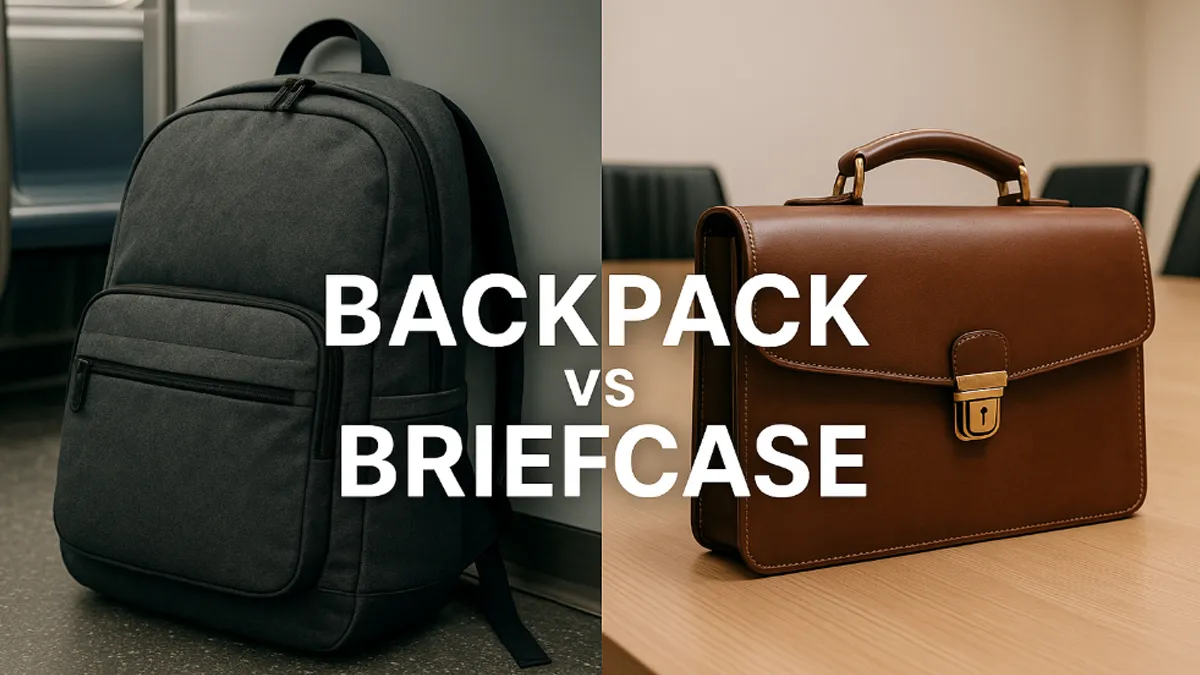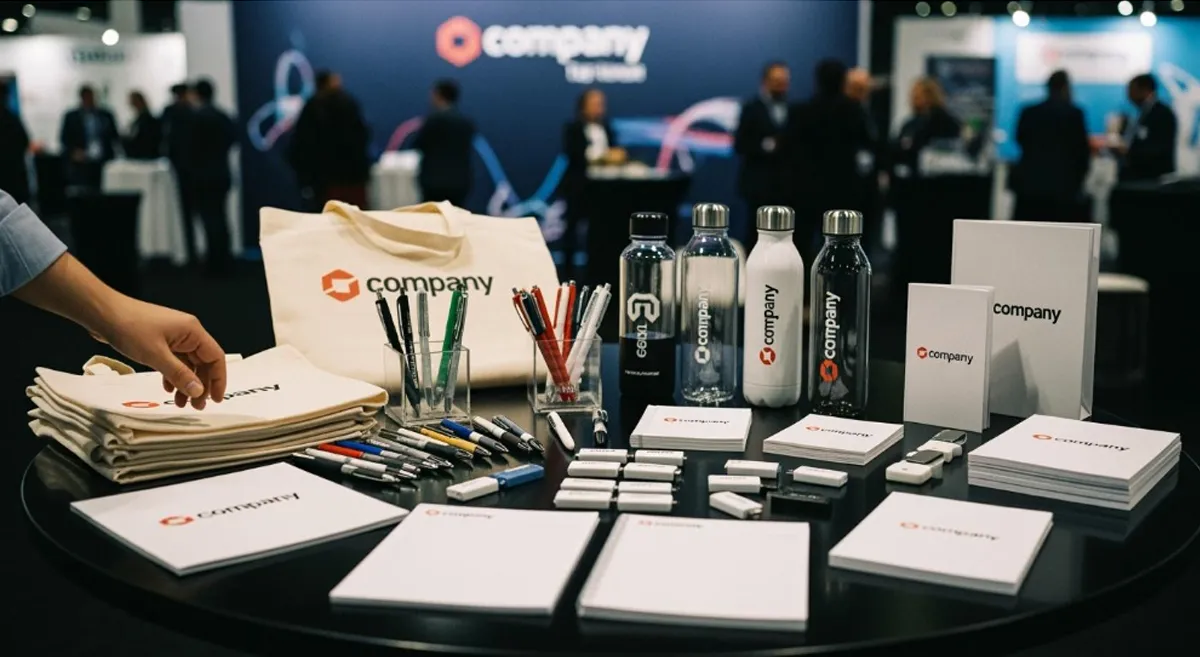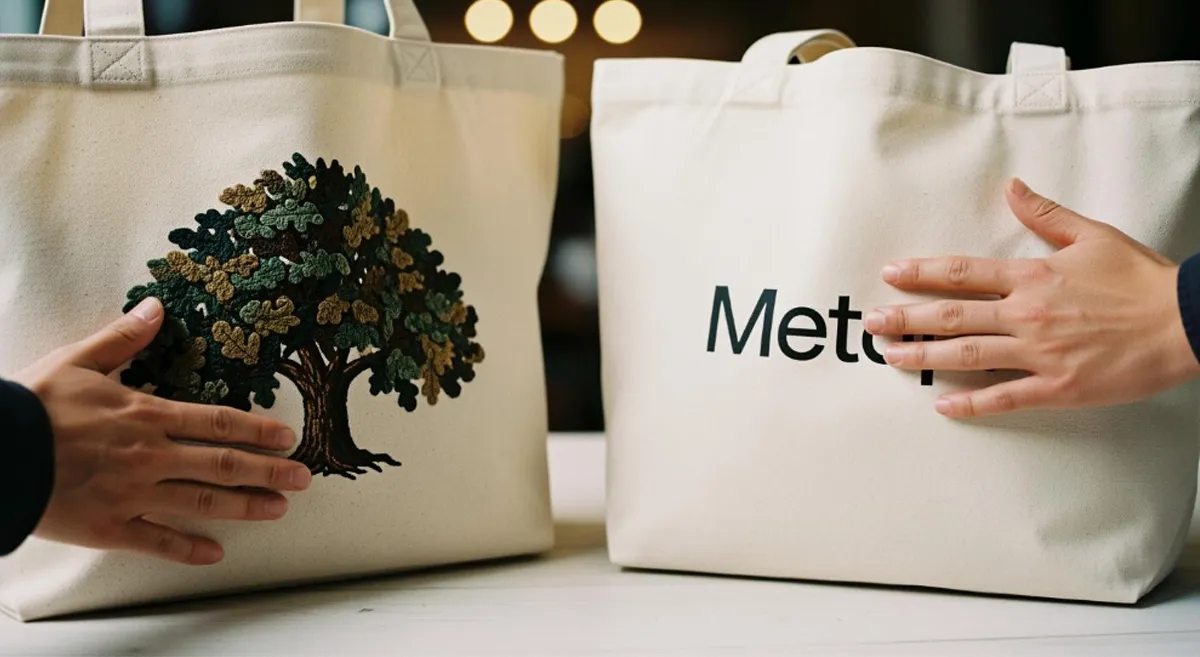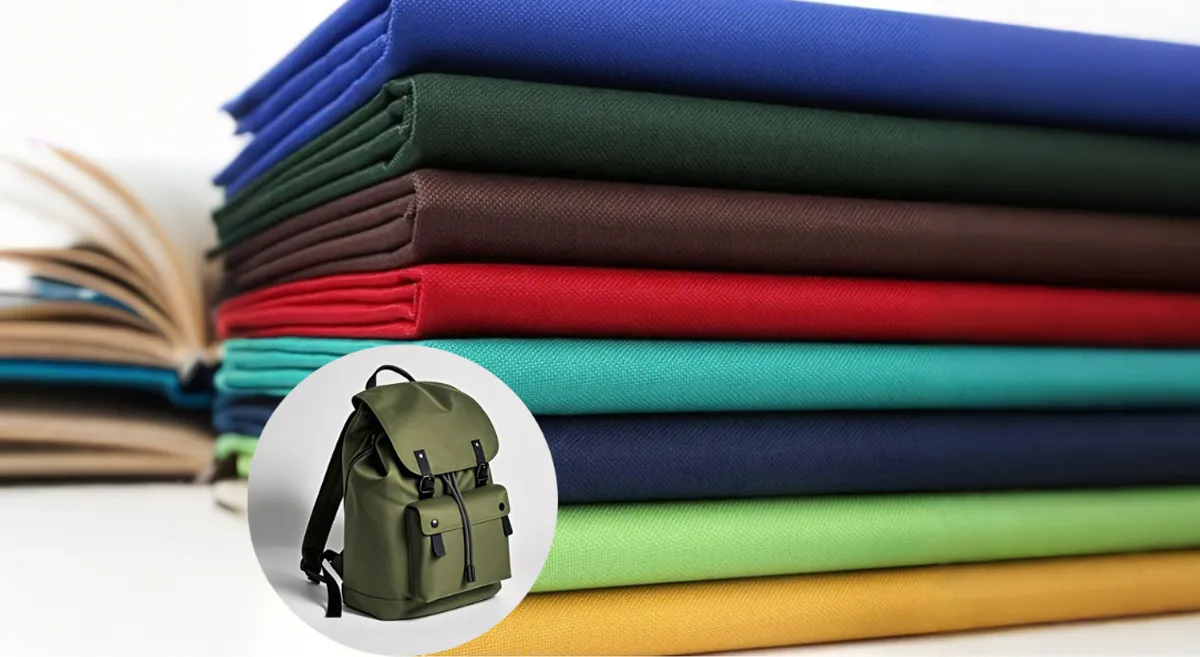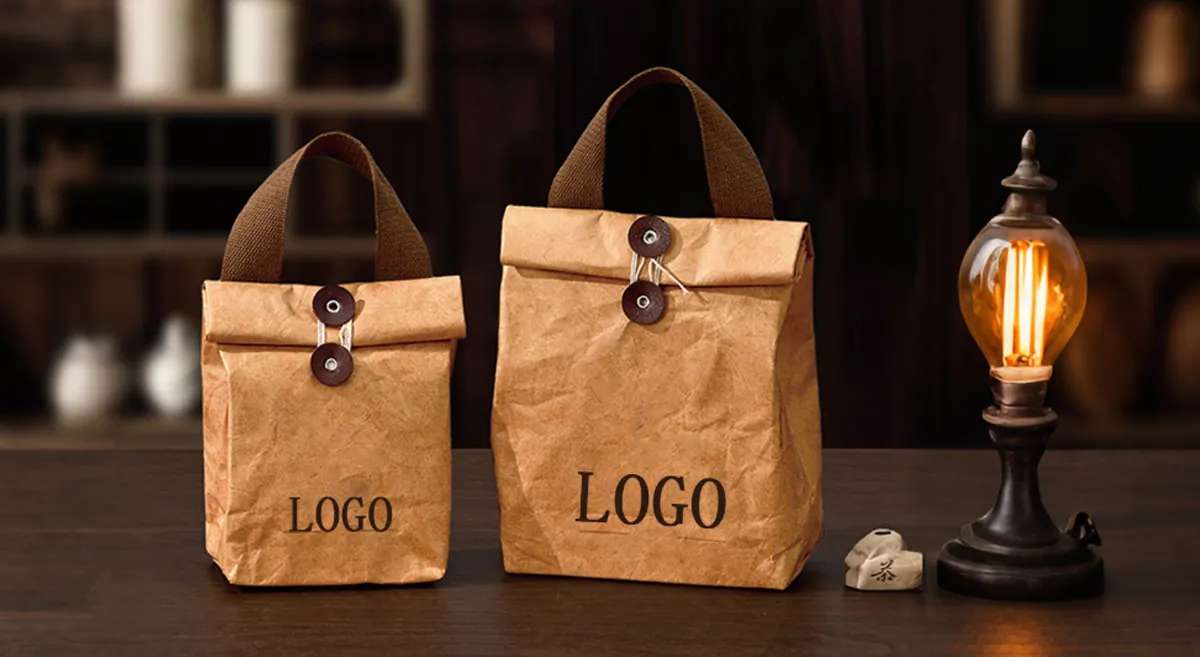Backpacks and briefcases are two of the most common bags for work and travel. Both carry your laptop and essentials, but they create very different experiences. The backpack is comfortable, flexible, and casual. The briefcase is polished, professional, and structured. The choice depends on your lifestyle, daily routine, and personal style.
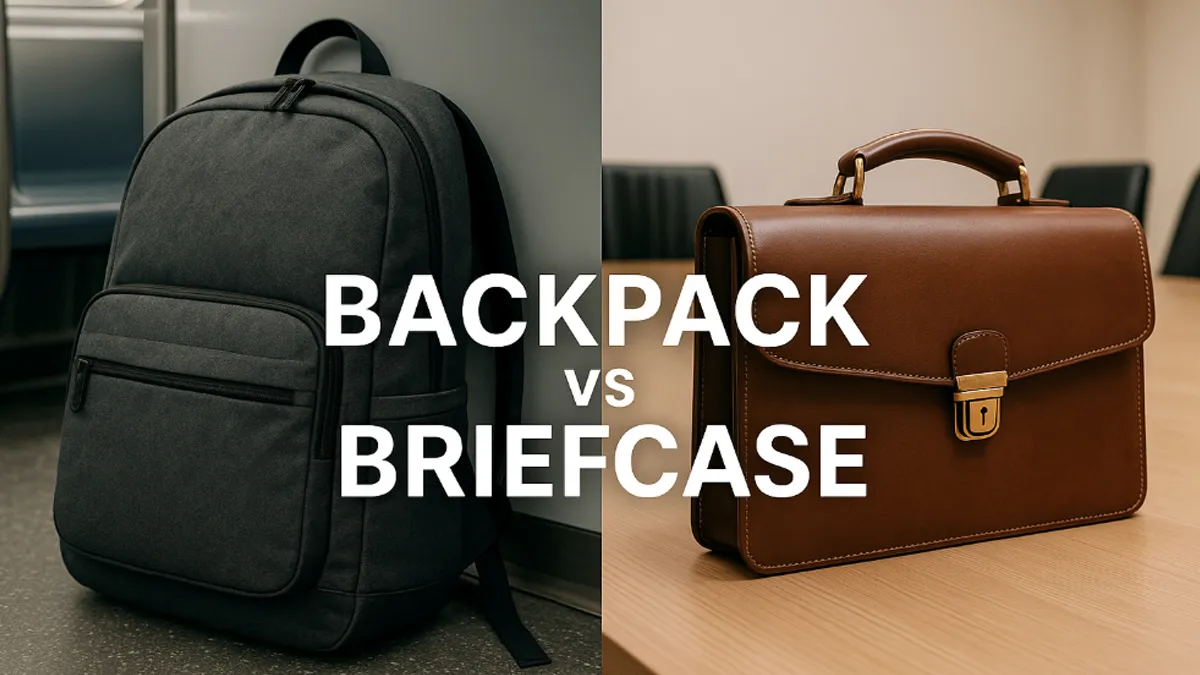
This guide compares every detail — comfort, storage, materials, cost, and image — so you can decide which bag really works best for you.
Quick Comparison Table
| Feature | Backpack | Briefcase |
|---|---|---|
| Style | Casual, modern, flexible | Formal, professional, classic |
| Comfort | Weight spread on both shoulders | Weight on one arm or shoulder |
| Storage | Spacious, many compartments | Slim, focused, minimal |
| Durability | Strong fabrics, easier to maintain | Leather ages well if maintained |
| Best for | Students, commuters, travelers | Executives, office workers |
| Price Range | Budget to premium | Mid to high, leather adds cost |
The Backpack
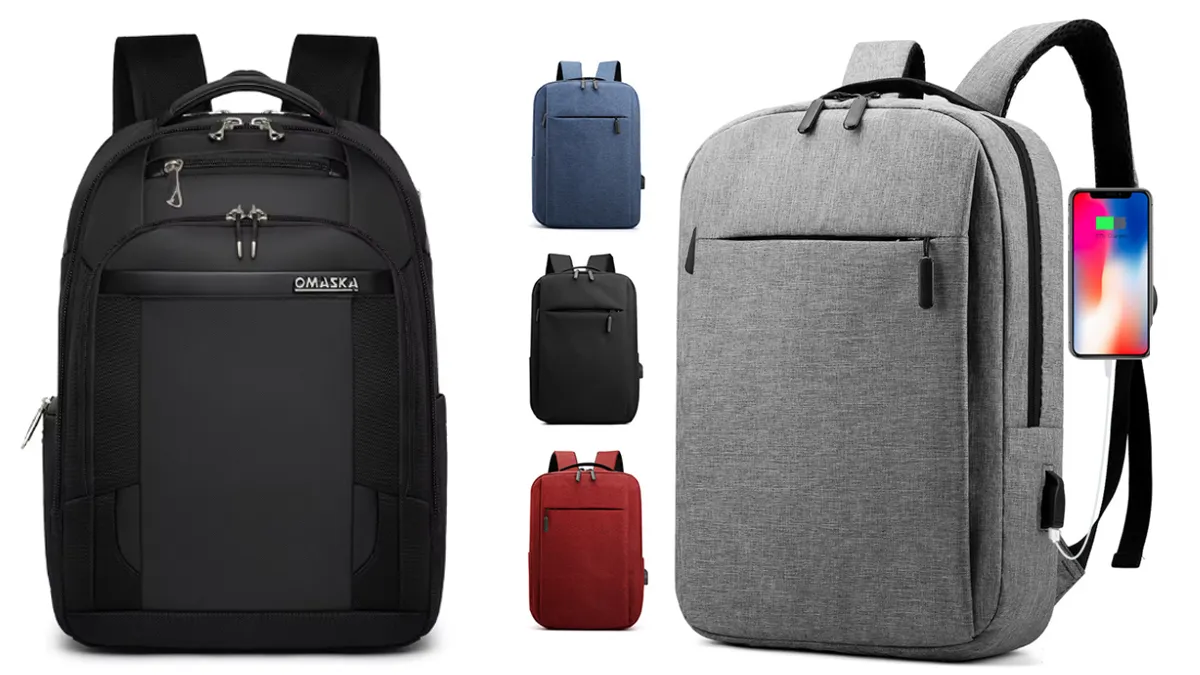
Backpacks have gone way beyond their original purpose of just carrying books to school. Today, they are everyday essentials for almost everyone — from students and commuters to business travelers and even executives. Modern designs come in all shapes and materials: sporty nylon for daily use, stylish leather for professional settings, and even eco friendly canvas for people who want sustainable choices. You’ll see them on subways, in airports, and in offices around the world because they simply make life easier.
Strengths
- Hands free comfort: A backpack leaves your hands free to grab your coffee, check your phone, or roll a suitcase through the airport. Two padded straps spread the weight evenly across your shoulders, which is a lifesaver on long commutes.
- Smart organization: Most backpacks now include a padded laptop sleeve, tech compartments for chargers and headphones, and even hidden pockets for passports or valuables. It’s like carrying a mobile storage unit that keeps everything in its place.
- Versatility: Whether you are heading to class, biking to the office, or catching a flight, a backpack adapts. It fits casual environments naturally but can also blend into work life if you choose a sleek design.
Weak Points
- Casual look: In very formal offices — think law firms, high level finance, or corporate boardrooms — a backpack can feel out of place. Even if it’s leather, some environments still expect a traditional briefcase.
- Bulk and size: Because backpacks hold so much, people often overstuff them. A packed backpack can look bulky, throw off your outfit, and in crowded places it can bump into others.
The Briefcase
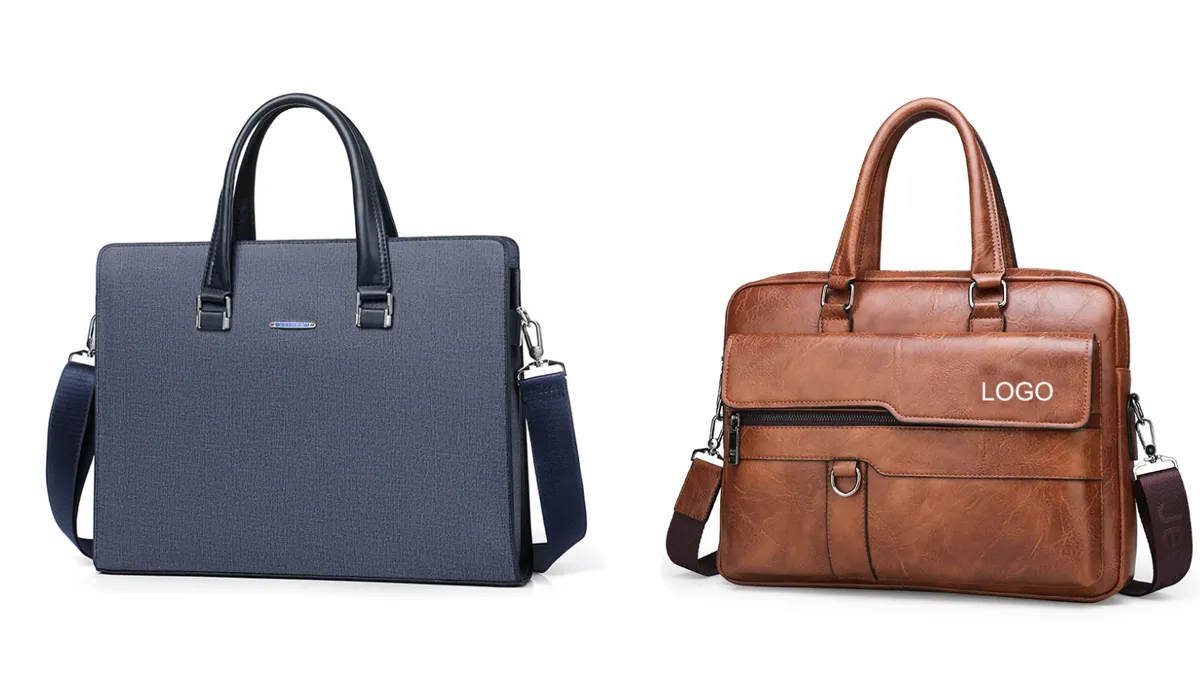
Briefcases have always carried a strong reputation for professionalism. Historically designed for lawyers carrying legal briefs, they quickly became a symbol of authority in business and government. Even today, walking into a meeting with a sleek leather briefcase sends a clear signal: you mean business. Modern briefcases, though, are not just stiff leather boxes. Many designs now include padded laptop sleeves, slim shoulder straps, and lightweight PU materials that make them more practical without losing that polished image.
Strengths
- Professional appearance: Nothing says “ready for the boardroom” like a classic briefcase. It instantly elevates your outfit, whether you are wearing a suit or business casual. Clients and colleagues often notice, which can make a strong first impression.
- Organized structure: Briefcases are slim and structured, built for files, contracts, laptops, and essentials like pens or business cards. The rigid frame keeps papers neat and easy to find during a meeting, which avoids the scramble of digging through a backpack.
- Durable materials: High quality leather briefcases can last for decades if properly cared for. They age beautifully, developing a patina that makes them even more distinguished over time. PU or synthetic versions, while lighter, still offer durability with lower cost.
Weak Points
- Comfort limits: A briefcase usually means carrying weight in one hand or on one shoulder. That is fine if you are moving from your car to an office, but less comfortable for long commutes or walks through airports.
- Space constraints: The slim design is elegant, but it comes with less room. If you carry gym clothes, snacks, or bulky items, a briefcase will feel restrictive compared to a backpack.
Comfort and Ergonomics
If you carry your laptop, charger, and extras daily, comfort matters.
- Backpacks distribute weight across shoulders and reduce back strain. Many include padded panels and airflow channels.
- Briefcases place weight in one hand or on one shoulder. Fine for short distances, not ideal for long commutes.
Verdict: Backpacks win for long daily use. Briefcases are better for short professional trips.
Storage and Organization
| Aspect | Backpack | Briefcase |
|---|---|---|
| Laptop Protection | Padded sleeves, shock resistant | Slim compartment, less padding |
| Compartments | Multiple pockets for tech, clothes, etc | Minimal dividers for files |
| Flexibility | Can carry books, gym gear, water bottle | Focused on laptop and papers |
| Expansion | Expandable versions available | Rare, usually slim design |
Backpacks fit extra items like lunch or gym gear. Briefcases keep you organized but limit bulk.
Materials and Durability
| Material | Backpack Use | Briefcase Use |
|---|---|---|
| Nylon | Lightweight, water resistant, daily | Rare, sometimes casual designs |
| Canvas | Eco friendly, customizable | Uncommon, more casual look |
| Leather | Premium backpacks for professionals | Classic, durable, ages well |
| PU / Faux | Stylish and affordable | Common alternative to leather |
Backpacks focus on practicality. Briefcases emphasize long lasting premium materials.
Cost and Value
- Backpacks: $20 to $300+, depending on brand and material
- Briefcases: $60 to $600+, leather pushing higher
Backpacks give more range and affordability. Briefcases cost more but reflect status and brand image.
Lifestyle Fit
| User Type | Best Choice | Why |
|---|---|---|
| Students | Backpack | Books, laptop, daily essentials |
| Young Professionals | Backpack or Hybrid | Commute comfort plus work meetings |
| Executives | Briefcase | Sharp, professional image |
| Frequent Travelers | Backpack or Convertible Hybrid | Hands free comfort at airports |
| Freelancers | Either | Flexible depending on meetings |
Hybrid Options
Let’s be honest, most of us don’t want to own two separate bags for different situations. That’s where hybrid bags come in. They look like a smart briefcase when you are walking into a client meeting, but with one quick move you can pull out hidden straps and wear it like a backpack.
Why is that a big deal? Imagine this: you finish a meeting downtown, grab your bag, and then hop on the subway or head to the airport. With a traditional briefcase, your arm is going to get tired fast. With a hybrid, you just throw it on your back and go. No fuss.
These bags are perfect for people like you and me who switch between formal and casual environments in one day. They are especially popular with:
- Young professionals who want flexibility without buying multiple bags.
- Business travelers who need comfort in airports but still want to look sharp in meetings.
- Companies that want to give employees something practical but stylish.
The only downside is that hybrids can cost a little more, and if your office is very traditional, they may still not look as “serious” as a classic briefcase. But honestly, for most people they’re the sweet spot between comfort and professionalism.
Maintenance
Taking care of your bag is like taking care of your shoes — a little effort makes them last way longer.
Backpacks
- Cleaning: Nylon and canvas backpacks are super easy. Wipe them down with a damp cloth, or if the label allows, toss them into the washing machine. Handy if you spill coffee inside (we’ve all been there).
- Zippers and parts: A quick check once in a while keeps things smooth. If the zipper feels sticky, a bit of silicone spray works wonders.
- Storage tip: Don’t leave your backpack crushed in a corner. It can lose shape over time.
Briefcases
- Leather care: Leather needs some TLC. Wipe it clean, apply conditioner every few months, and keep it away from direct sunlight or heaters. That way it stays soft instead of cracking.
- PU and synthetics: Easier to handle — just wipe with a damp cloth. No conditioner needed, but try not to scratch them.
- Storage: Keep your briefcase standing upright, and if you have a dust bag, even better. It keeps it looking sharp for years.
Think of it like this: backpacks are like sneakers — easy to clean, replaceable if worn out. Briefcases are like dress shoes — they need a little polish, but they reward you by lasting much longer.
Manufacturer Buying Tips
Since we actually make bags, let me share a few insider tips that can save you headaches when you’re choosing one:
- Check the hardware: Zippers, buckles, and handles are the first things to fail on cheap bags. Metal beats plastic every time.
- Look at the stitching: If you see loose threads or single stitching, that bag won’t last long. Double stitching means stronger seams.
- Choose the right material: Want lightweight and waterproof? Go for nylon. Want eco friendly? Recycled fabrics or vegan leather are solid picks. Want premium? Nothing beats real leather.
- Think about function: A good bag should work for your lifestyle. Padded laptop sleeve, hidden pockets, expandable space — these little details make a huge difference day to day.
- Custom branding: If you’re a business or planning bulk orders, ask about custom logos. Screen printing, embroidery, or embossing can turn a standard bag into something unique to your brand.
- Ask about samples: Especially if you’re buying wholesale. Always check a sample before going big. It ensures quality and consistency.
Bottom line: don’t just judge a bag by how it looks on the outside. Pay attention to the details — they’re what determine whether your bag becomes a long term partner or something that falls apart in a year.
Conclusion
Backpacks win on comfort, storage, and flexibility. Briefcases win on style and professionalism. Hybrids give you a mix of both.
The right choice depends on how you live and work. If your days are full of commuting, carrying gadgets, and moving around, a backpack will keep you comfortable. If you want to walk into meetings looking sharp and confident, a briefcase will fit the moment. And if your schedule swings between both worlds, hybrids let you switch easily without needing two bags.
Since we design and manufacture both backpacks and briefcases, we see this choice play out every day with our clients. Some prefer the practical comfort of a backpack, others stick with the timeless look of leather, and many go for a custom hybrid. If you are thinking about sourcing bags — for your brand, company, or team — we can help you create the version that fits your needs best.
Contact us today to request samples or get a quick wholesale quote.
FAQs
Is a backpack professional enough for work?
It really depends on your workplace. In many modern offices, especially tech companies or creative industries, a clean and minimalist backpack looks completely fine. Leather or sleek nylon designs actually give off a professional vibe while keeping you comfortable during your commute. Of course, if you work in a very traditional environment like law or finance, a classic briefcase may still be the safer choice.
Can a briefcase carry a laptop safely?
Yes, most modern briefcases come with a padded sleeve or a dedicated laptop compartment. But here’s the catch: briefcases are usually slimmer, so they don’t absorb impact as well as a backpack. If you often move through crowded places or travel a lot, a backpack with thicker padding and shock protection may give you extra peace of mind.
Which bag lasts longer?
A high quality leather briefcase can easily last ten or twenty years if you take care of it — polishing, conditioning, and storing it properly. A backpack usually lasts several years, depending on the fabric. Nylon and canvas backpacks hold up well, but they may start fraying if you overload them daily. Think of it this way: briefcases are like classic dress shoes that get better with care, while backpacks are more like sneakers that eventually wear out but can be replaced easily.
Which is better for travel?
For airports, buses, and long walks, a backpack is hands down more convenient. You can keep your hands free for tickets, snacks, or dragging a suitcase. But if your trip involves important business meetings, a slim briefcase will help you walk into the room looking sharp. Some people even carry both — a backpack for the journey and a slim briefcase tucked inside their luggage for meetings.
Are eco friendly options available?
Definitely. Many brands now offer backpacks made from recycled polyester, organic cotton, or even fabrics spun from old plastic bottles. On the briefcase side, vegan leather and eco friendly PU are becoming popular alternatives to animal leather. If sustainability matters to you or your company, it’s worth asking the manufacturer (like us) about eco materials when placing an order.
How should I clean a leather briefcase?
Leather needs a little extra love. Wipe it down with a soft cloth to remove dust. For deeper care, apply leather conditioner every few months to keep it from cracking. Always keep it away from too much water or direct heat. If you spill coffee on it, blot gently and let it dry naturally — never use a hairdryer. Treated right, your briefcase will only look better with age.
Do you offer custom bags with logos?
Yes, and it’s one of the things we specialize in. Companies often ask us to create custom backpacks or briefcases with their logo for events, employee gifts, or retail. We can do printing, embroidery, or even embossing on leather. It’s a simple way to make your brand stand out, and since we’re the manufacturer, you can get bulk pricing and tailored designs that fit your needs perfectly.

